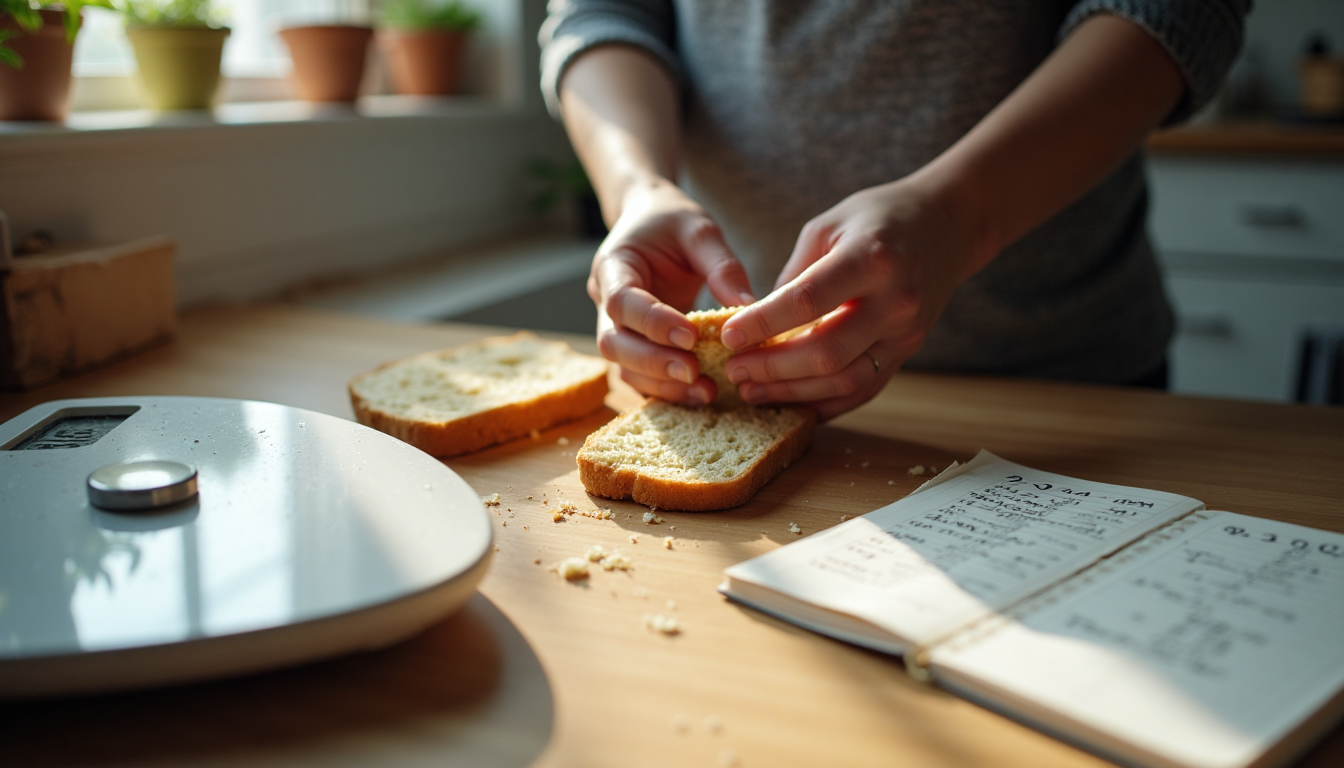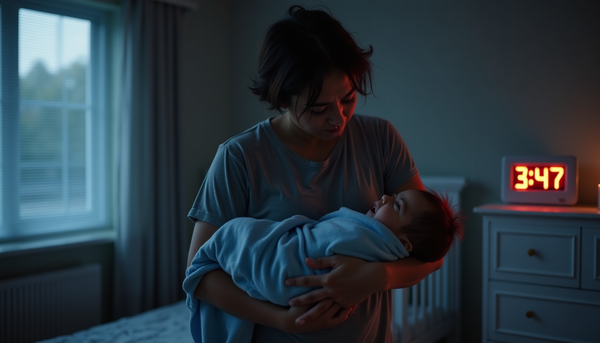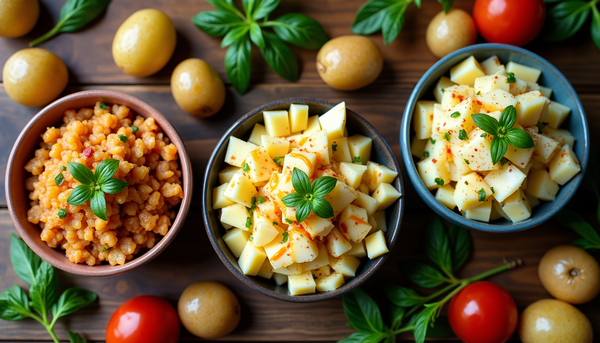The Middle Path: Why I Ditched My Food Scale for Something Better

The Middle Path: Why I Ditched My Food Scale for Something Better
Or how I learned to stop worrying and trust my hunger cues (mostly)
I'll be honest with you—I used to be that person who weighed banana slices.
Yeah, you read that right. Banana. Slices. Because apparently my macro app needed to know the exact difference between a 67-gram banana and a 72-gram one. Looking back, this seems completely unhinged, but at the time? It felt necessary. Essential, even.
For three years, I tracked every morsel that went into my mouth. I knew the macro breakdown of everything in my kitchen, could eyeball 4 oz of chicken from across the room, and felt genuinely anxious if a restaurant didn't have nutrition info available. I thought I was being "healthy" and "disciplined."
Plot twist: I was miserable.
The Problem with Black-and-White Thinking
Here's what nobody talks about when they're selling you the latest tracking method—eventually, the thing that gives you control starts controlling you.
I'd tried everything:
- Strict macro counting (hello, banana scale)
- Calorie tracking apps with their judgmental little red numbers
- Intuitive eating (which somehow made me more anxious about my food choices)
- Various "flexible dieting" approaches that weren't actually flexible at all
Each method fell into one of two camps: either hyper-rigid external control or complete "trust your body" freedom. And honestly? Neither worked for my actual life.
The tracking methods made me feel like a robot inputting data. The intuitive approaches left me feeling lost after years of relying on apps to tell me when I'd eaten "enough." I was stuck in this weird middle space, wanting structure but also wanting to feel normal around food again.
Then I stumbled across something called RPE-Eating, and it literally changed how I think about nourishment.
What the Hell is RPE-Eating?
Okay, stay with me here because this might sound weird at first.
You know how at the gym, trainers sometimes ask "how hard was that set on a scale of 1 to 10?" That's Rate of Perceived Exertion (RPE)—basically rating how much effort something takes based on how it feels to you, not just external metrics.
Dr. Gabrielle Fundaro (who has way more nutrition credentials than I do) had this lightbulb moment: if RPE works for training, why not eating?
She created an RPE scale for hunger and fullness:
1-3: Inadequate fuel (ranging from "I might pass out" to "definitely hangry") 4-7: Adequate fuel (the sweet spot from "slightly peckish" to "comfortably satisfied") 8-10: Excess fuel (from "a little too full" to "why did I do this to myself")
The goal isn't to hit perfect numbers every time—it's to develop awareness of what different levels actually feel like in your body.
How I Actually Use This Thing
Let me walk you through how this works in real life, because the theory is nice but application is everything.
Step 1: Check In Before Eating
Before I eat, I ask myself: "Where am I on the hunger scale right now?"
Sometimes I'm at a 3 (stomach actively protesting), sometimes a 5 (neutral, could eat or wait), sometimes a 6 (not actually hungry but food sounds good). There's no "right" answer—just awareness.
This simple check-in has been revelatory. I realized I was eating at scheduled times whether I was hungry or not, and then wondering why I felt overly full or still unsatisfied afterward.
Step 2: Eat With Actual Attention
I know, I know—mindful eating advice is everywhere and it's usually as helpful as "just relax" when you're stressed. But here's the thing: you don't have to eat like a meditation monk for this to work.
I just try to notice what I'm eating instead of scrolling my phone or watching Netflix. Weird concept, right? Sometimes I forget and zone out completely. That's fine. The awareness comes in flashes, not constant perfect attention.
Halfway through my meal, I check in again. How hungry am I now? Should I keep going or am I good?
Step 3: The Satisfaction Factor
This is where RPE-Eating gets interesting and where it differs from basic hunger/fullness scales.
Being physically full (satiety) isn't the same as feeling satisfied. You can eat a "perfectly balanced macro meal" and still find yourself standing in front of the fridge 20 minutes later, not because you're hungry, but because something feels... missing.
Maybe you really wanted something warm and cozy but ate a cold salad because it was "healthier." Maybe you craved something rich and savory but forced down another protein smoothie. Your calorie needs might be met, but you're not actually satisfied.
I've learned to ask: "What do I actually want right now?" And then—revolutionary concept—I try to eat that thing. Within reason, obviously. I'm not suggesting ice cream for breakfast every day, but if I want something sweet and creamy, maybe Greek yogurt with berries hits the spot better than another egg white omelet.
The Stuff That Actually Trips People Up
Let's be real about the challenges here, because this isn't some magical solution that fixes everything overnight.
It Takes Practice (And You'll Mess Up)
The first few weeks of trying this, I either under-ate because I was afraid to trust my hunger or over-ate because I was so relieved to not be tracking that I went a bit wild. Both are normal.
Your hunger cues might be wonky if you've been ignoring them for years. Mine certainly were. It took time to remember what actual hunger felt like versus boredom, stress, or habit.
Emotional Eating Still Happens
RPE-Eating doesn't magically solve stress eating or eliminate food cravings. If you're the type to demolish a bag of chips after a terrible day at work, this scale won't prevent that.
But it does help you notice what's happening. Now when I find myself stress-eating, I can usually identify it as such: "Oh, I'm at a 7 on the fullness scale and still reaching for snacks. What's going on emotionally right now?"
Sometimes I eat the snacks anyway, but with awareness instead of autopilot. That's progress.
It's Not a Weight Loss Hack
I need to be super clear about this: RPE-Eating is not a sneaky way to cut calories or optimize your macros. It's about developing a sustainable relationship with food.
Dr. Fundaro mentions you could theoretically use it for weight goals (eating in the 4-5 range for loss, 7-8 range for gain), but honestly? If you're approaching it as another diet method, you're missing the point.
Your weight might fluctuate when you stop rigid tracking. Mine did. Body changes are possible when you shift how you eat. The question is whether you can be okay with that in exchange for food freedom.
Who This Actually Works For
Based on my experience and talking with others who've tried it, RPE-Eating seems to work well for people who:
- Have been tracking food obsessively and want an off-ramp
- Feel anxious when they stop tracking but also tired of doing it
- Want some structure without rigid rules
- Are willing to tolerate imperfection while learning
It's probably not ideal if you:
- Need very specific nutritional targets for medical reasons
- Are preparing for physique competitions or athletic events with strict requirements
- Aren't ready to let go of controlling your body size/shape through food
- Don't have time or mental bandwidth for much self-reflection around eating
The Skeptic's Corner
I can hear some of you thinking: "This sounds like hippie nonsense. What about protein targets? What about calorie deficits? What about SCIENCE?"
Fair questions. Here's my take:
Yes, calories matter for weight change. Yes, protein is important for muscle maintenance. Yes, nutrition science is real and valuable.
But also—how's that rigid tracking working out for your mental health and long-term sustainability? Because if you can't maintain your approach without feeling stressed, anxious, or obsessive, then it's not actually working.
RPE-Eating isn't anti-science. It's using different data—internal physiological cues instead of external numerical targets. Your hunger and fullness signals are based on actual biological processes. They're just harder to quantify than numbers in an app.
Think about it this way: elite athletes use RPE in training because it accounts for variables that external metrics can't capture—sleep quality, stress levels, how their body feels that specific day. The same logic applies to eating.
My Honest Assessment After 8 Months
So where am I now, eight months after ditching my food scale?
My relationship with food is infinitely more peaceful. I eat when I'm hungry, stop when I'm satisfied (most of the time), and don't have anxiety attacks when faced with restaurant meals or social eating situations.
My weight has been stable within a 3-4 pound range, which is probably more natural than the precise control I thought I had before. My energy is consistent. I actually enjoy meals instead of treating them like fuel stops.
Am I hitting optimal macros every day? Probably not. Do I care? Also probably not.
The biggest change is that I trust myself around food again. I don't need an app to tell me whether I've eaten enough or too much. I don't calculate whether I've "earned" dessert through exercise. I don't feel guilty about seconds if I'm actually still hungry.
This isn't about being perfect. It's about being human.
If You Want to Try This
Start small. You don't need to abandon all your current approaches overnight.
Maybe try the hunger scale with one meal a day for a week. Notice what different levels feel like without trying to change anything. Get curious about your patterns.
Pay attention to the difference between satiety and satisfaction. When do you feel physically full but emotionally unsatisfied? When do you feel genuinely nourished versus just fed?
Expect it to feel weird at first, especially if you've been relying on external cues for a long time. Your hunger signals might be rusty. That's normal.
And remember—this is just one tool. It doesn't have to be your entire approach to eating. Take what works, adapt what doesn't, and ignore anyone (including me) who insists their way is the only way.
The goal isn't perfection. It's peace.
What's your relationship with food tracking like? Have you found approaches that give you structure without stress? I'd love to hear about your experiences—the messy, imperfect, real-life ones especially.




